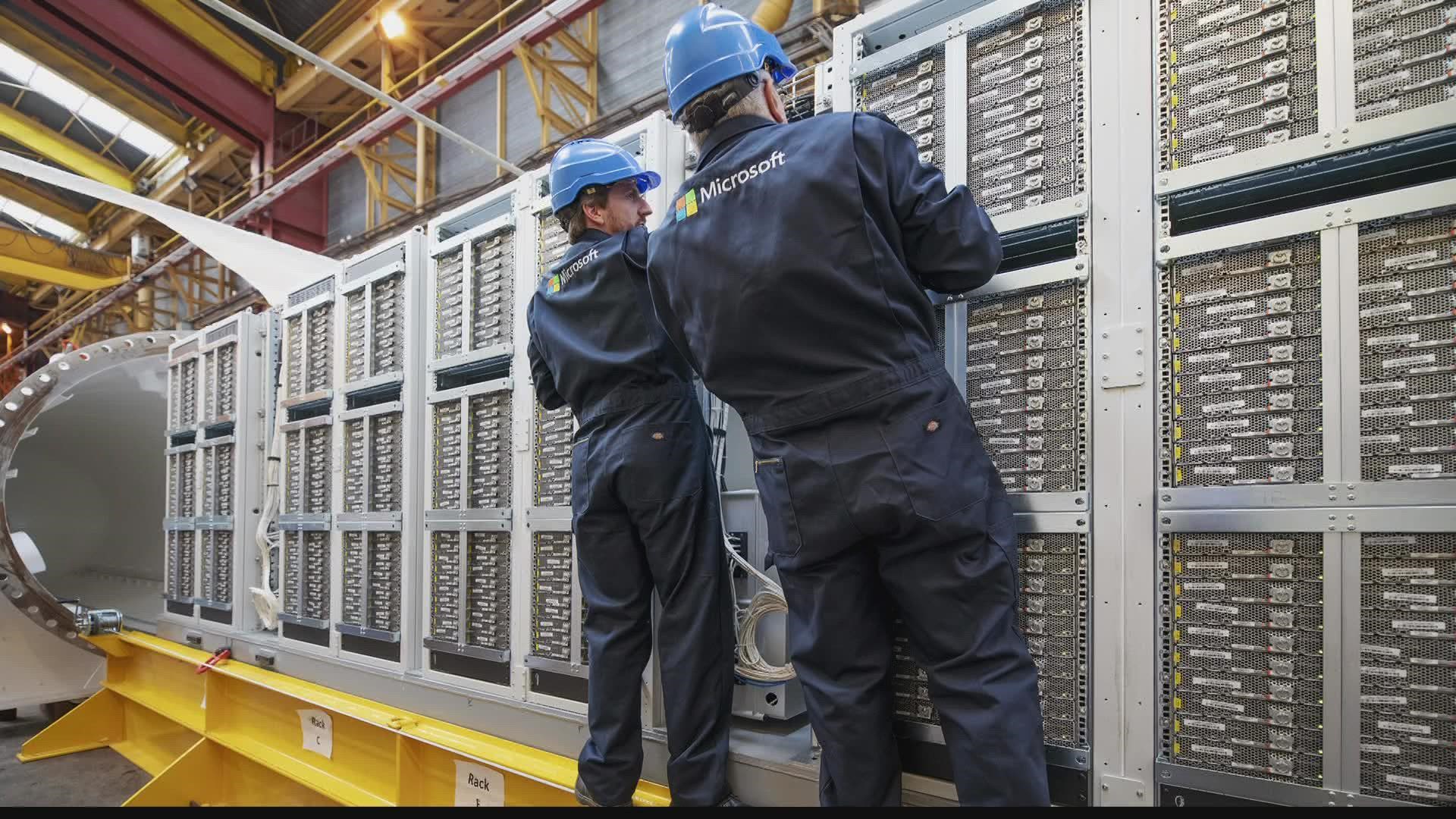PHOENIX — Every cat video, every meme, every selfie costs water.
The internet runs on servers. Huge buildings full of them, spread out all over the country. It's a law of computing that those computers generate heat as they run, and they need to be cooled down or they'll overheat and shut off. And for almost every data center, that takes water.
"We all love the fact that we can store a lot of data," Sarah Porter, Director of the Kyl Center for Water Policy at Arizona State University said. "We don't think much about the water footprint of every selfie."
In order to cool those servers, most data centers use either electric air conditioning or, more likely, evaporative cooling. Those coolers use water passed over fans to chill the air and lower the temperature in the server rooms.
How much water varies from location to location and building to building, but some estimates are that data centers can use a million gallons of water per day. And once it runs through the cooling systems, Porter said, it's typically briny and not usable without heavy purification.
In Arizona, where a 22-year drought has decimated water supplies in Lake Powell and Lake Mead, that's a lot of water to use at one time.
Return on water investment
"There are other industries that could move in and use the same amount of water or even less and provide many more jobs or other types of revenue for a city," Porter said.
Most data centers, for their hundreds of thousands of square feet of real estate, don't employ thousands of people. It's more like tens, or maybe 100.
In Mesa, a data center being built by Meta, the parent company of Facebook, will reportedly employ about 100 people.
The building will be more than 900,000 square feet when it's completed.
Meta entered into a deal with Mesa to put back more water than it claims the building will use. Meta said the data center will use 60% less water than a normal data center, and they plan to invest in projects that will replace 200 million gallons of water per year. If it works the way Meta plans, the data center will replace more water than it uses.
The building, near Ellsworth and Elliott roads in Mesa, is still under construction.


Bring Your Own Water
Not every city is ready to give up the amount of water a data center needs.
Chandler adopted an ordinance in 2015 that gave all businesses an ultimatum: show a benefit to the city worth the amount of water they're getting, or bring your own water.
"What's happened is, they really haven't grown in Chandler," Utility Resources Manager Gregg Capps said.
The policy requires water-cooled data centers to either replace the water they use with actual water from another source or buy water credits to offset their use.
"We were a little concerned they would have a negative perception that Chandler didn't have the water, Capps said. "But it was the opposite. We had the water, we just wanted to make sure we used it appropriately."
Finding other ways to cool
Tech companies have been trying to find better ways of cooling data centers, with varying success.
Microsoft has tried sinking smaller data centers in the ocean to cool them. The company said it's worked in the past on a small scale. Now they're trying a larger test in the Orkney Islands off the Scottish coast.
But, even if ocean cooling works, there are existing data centers across the country.
It would be expensive to move every data center that's already built, install them into water-tight containers and sink them into the ocean.
"The companies themselves are also more conscious than ever," Porter said. "We're seeing companies think very carefully about their use of water resources and the optics of moving in and taking up a big chunk."
Still, Arizona faces even more cuts from the amount of Colorado River water it gets. Water officials are forecasting another shortage declaration in August and no end in sight to the decades-long drought.
And even though their water use may be declining, data centers are all over the southwest, all using water to keep your photos and videos online.
12 News on YouTube
Catch up on the latest news and stories on the 12 News YouTube channel. Subscribe today.

